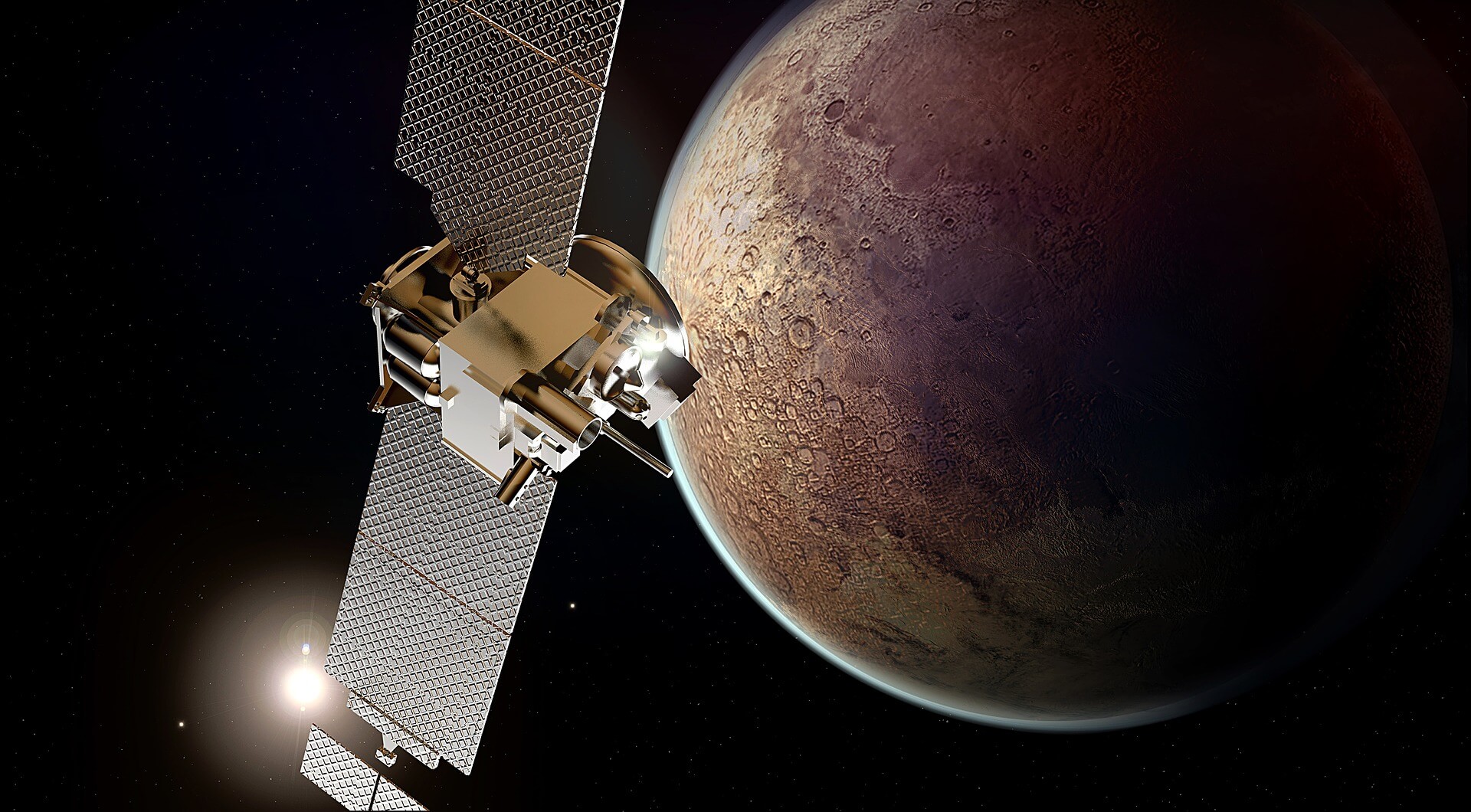NASA’s Perseverance Rover Has Successfully Landed on Mars
The interplanetary vehicle “Perseverance” of the American National Aeronautics and Space Administration (NASA) made a successful landing on Mars on Thursday, February 18.
The largest and most technically sophisticated probe NASA as sent to Mars has become the ninth spacecraft to land on the surface of the Red Planet. For the first time in history, a specially designed Martian helicopter was sent with it.
The space probe entered the upper atmosphere at about 21.49 (Central European time) at a speed of more than 20,000 km/h. A few minutes later, the parachute and the brake engines turned on, slowing the vehicle down to about 3 km/h. Then the technology “Sky Crane” was turned on, which lowered the “Perseverance” on nylon cables to the surface of the planet.
What is the Purpose of the Perseverance Rover?
As planned, the Perseverance rover landed near the Jezero crater in a region called the plain of Isis. This area is often visited by American probes, including the Mars rover “Curiosity”, which is still active, but now moved away from the plain for 3700 km – to the Gale crater.
As part of NASA’s Mars 2020 mission, Perseverance will search for water and signs of life beneath the planet’s surface. The probe will also collect rocks and soil samples and place them in containers that are planned to be delivered to Earth over the next 10 years.
Perseverance is very similar to Curiosity, but its instruments are specifically designed to search for traces of life. To this end, it will study the Martian soil as thoroughly as any mission before it. If there is suspicious organic matter on Mars, the instruments will have to detect it. And if not — well, such a thorough study of foreign rocks is valuable for science in itself.
What About Ingenuity?
A specially designed Ingenuity helicopter attached to the probe’s hull also arrived on Mars. This experimental device NASA wants to use to study the possibility of takeoff and landing in the Martian atmosphere. The importance of the experiment lies in the fact that the atmosphere on Mars is much more rarefied than on the Earth, and this can affect the power level and lift required for flight, as well as the speed of rotation of helicopter blades.
How successful such a flight will be is almost irrelevant now. Whatever happens, for the first time, one of the space powers will experience a flight “in another world”, as the American Space Agency put it. However, such test flights can pave the way for future missions – already with astronauts who can go to Mars and return. Even if such missions will be possible only after many years.
By the way, flying over Mars will not be easy at all. The density of the atmosphere at the very surface there is about the same as 30 kilometers above the Earth. Meanwhile, Earth helicopters have never climbed above 12 kilometers.
That is why, with its tiny mass, the drone boasts a propeller with a blade span of 1.2 meters. And it will rotate at a speed unimaginable for terrestrial machines at 3000 revolutions per minute.Q
UAE and China Mars Missions
In July 2020, three countries sent interplanetary space probes to Mars at once: in addition to the USA, the United Arab Emirates and China did it. However, unlike the USA, the UAE and Chinese missions are aimed at working in the orbit of the Red Planet, although the Chinese “Tianwen-1” will also try to land on Mars this spring.
The UAE’s Mars mission involves the Hope satellite. It was the first of three probes to orbit the planet on February 9, 2021. The satellite will spend two years conducting tests at various altitudes. Its goal is to provide the world’s scientific community with the first complete description of the Martian atmosphere.
On February 10, 2021, the Chinese spacecraft Tianwen-1 also entered the orbit of Mars, which will also study the Martian atmosphere. Three months later, it will land on the surface of Mars and thus become the first Chinese rover in history. Like the American Perseverance, the Chinese probe will look for signs of life and the water needed for it under the surface of the planet.
The Space Race with China
Some countries and organizations have expressed interest in cooperating with China in its space research programs. So, in early February, the Russian state corporation Roscosmos said that they were discussing with Beijing the creation of a joint lunar station.
China’s ambitious plans are raising concerns among experts who are talking about a new space race in which China could become the main competitor for the space powers. First of all – for the United States and Europe, which are cooperating under the new lunar program “Artemis”, which provides for the deployment of bases on the surface of the Moon and in its orbit.
Russia in early February refused to participate in this program. Because Russia “has its own lunar program, which “weighs” ten times cheaper than the American one, but will give no less important results for their scientists.


